Forex Trading Articles
THE HUMMER TEACHES FOREX
By Dick Thompson for Forexmentor
©2010, Forexmentor.com, April 2010
Once upon a time, there were Hummer dealerships. They had many vehicles and sales were brisk. The Hummer was a Boss Ride and gas was cheap. Life was good.
There was a lot of competition between salesmen and dealers but demand was great and prices did not vary much from the manufacturer’s suggested price. Over any time period, sales would look like this:

A short time later, a terrible thing happened; the price of gasoline rose. The buyers got nervous because the Hummer was not fuel efficient. Sales slowed. Demand fell. As the law of supply and demand dictates, the price of Hummers fell too.
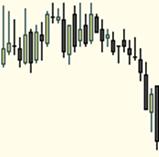
Life went on and eventually the price of gasoline stabilized and even began to fall. Hope returned to the dealers for they still had a large supply of Hummers. Demand began to firm and the picture brightened. The price of Hummers stabilized.
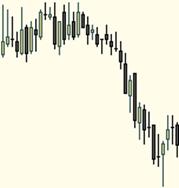
Then a wonderful thing happened; the price of gasoline fell strongly. The dealers rejoiced. The buyers would surely return and the demand would increase. The dealers began to raise the price of Hummers again.
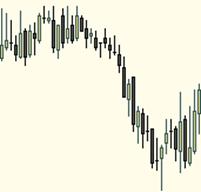
But the demand was no longer strong. A few buyers did return but there were many, many Hummers left on the dealer’s lots. Supply was large and demand fell short. The price of the Hummer fell again.
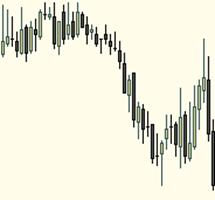
What lessons can we learn from this as Forex traders? The answer is that the law of supply and demand applies to the Forex market, as it does in every other market. When supply and demand are in balance, prices will be stable. When supply and demand go out of balance, stability will crumble and price will either rise or fall. If supply exceeds demand, as it did above in our Hummer story, price will fall. If demand exceeds supply (think Prius), price will rise.
We are familiar with the terms support and resistance but sometimes it is vague in our minds just how to judge what price might do when it arrives at those levels. Perhaps by thinking of support as demand and resistance as supply, we can gain some insight. .
For instance, what might we expect to happen on this chart of the NZDUSD?
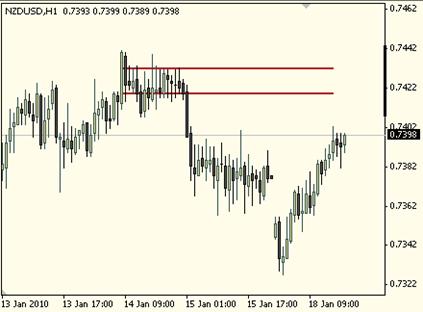
On Jan 13 and 14, price was consolidating between .7420 and .7430. This tells us that supply and demand were in balance; buyers and sellers just trading away, everyone happy. Then price dropped. Why? Because demand at the previous price disappeared even though there was supply. From this, we can now define that consolidation as an area of supply. When supply exceeds demand, price has to drop until a buyer steps in and is willing to pay it. If not many buyers are willing, if there is not much demand, price continues to drop.
So what might be the situation when price regains that level? We know that there is supply there. Will there be a lot of demand? If not, then price will not be able to maintain that level. Price will again drop. That is what we mean by resistance. Perhaps thinking it through in terms of supply and demand clarifies the scenario.
Here is another chart; the GBPJPY? Is there any surprise about the reaction at the support level of 147.31?
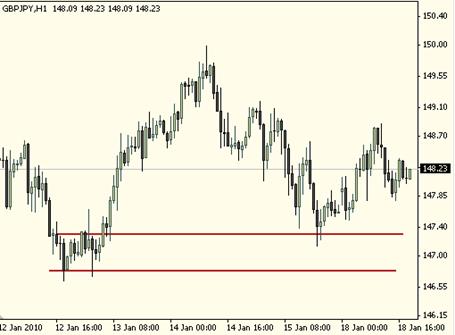
In this case, price was in a consolidation back on Jan 12, which we should understand as a balance between supply and demand. Then it broke out strongly and ran for about 250 pips, to 150.00. Clearly, that identifies that consolidation as an area of demand. Three days later, price returned to that area and the demand was still there. Price responded for over 100 pips.
What we have just studied is nothing more than another way to look at support and resistance in the Forex market. My hope is that by looking at it in a little different way, it can become more clear and tradable. It has for me. We must remember however, that there are many issues to be dealt with when trading and support and resistance, or supply and demand, is no different. For instance, just because price is returning to an area of prior supply or demand, doesn’t automatically mean that there is a trade to be made. We must still know that there is room for price to move to a logical profit level before encountering strong support or resistance. This is only one consideration; there are many. But clearly, the first step is identifying that level where we can reasonably expect price to react. I hope that this article has helped in that.
Index of All Forex Trading Articles
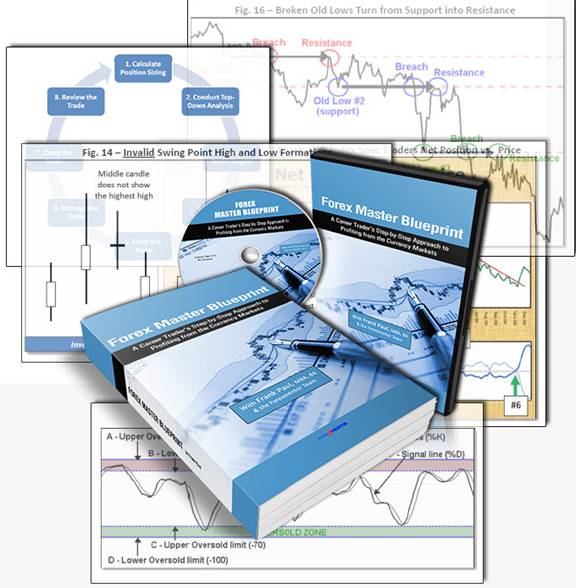
|
